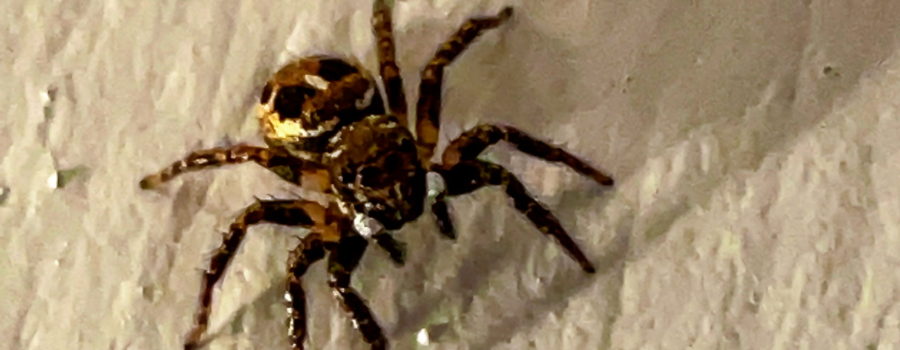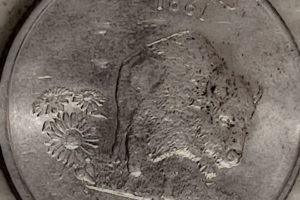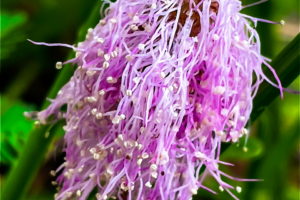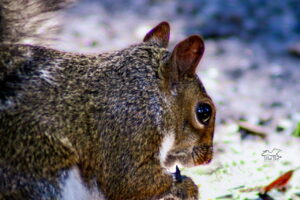The Twin Flagged Jumping Spider Has a Unique Hunting Style

There are a lot of plants and animals in nature that I love, but high on that list are jumping spiders. They’re small, so I find them kind of cute (sorry to all you folks out there who are afraid of spiders), but I also love the way they move and jump. They’re so active and full of energy. They’re also generally not afraid of people. I have had them jump on me on many occasions when I’ve been photographing them or just observing them. They usually just run along and then jump right off again. They are capable of biting, but I have never been bitten by one. If one was to bite you (that alone might be hard since their mouth parts are so small), you might suffer some mild discomfort and itching. The other thing I love about them is the way they cock their heads to look at you. It makes them look intelligent. Of course, that’s not really the case. They are highly visual, and they are trying to get a better view, probably to see if they should think of you as prey, but to me it’s still adorable!

Florida has quite a few species of jumping spiders, but tonight I want to focus on one in particular. It’s one of the most common jumping spiders in the southeastern United States known as the twin flagged jumping spider (Anasaitis canosa). It’s so named because of the large white spots on the pedipalps. When the spider waves the pedipalps around, those spots look like flags waving. The pedipalps are extensions of the mouth parts that look like a fifth pair of legs extending from underneath the spider’s head. They aren’t used for walking, though. Instead, they are sensory organs that the spider uses to take “readings” of it’s environment. They are also important in the mating displays that male spiders put on to attract females. Finally, the pedipalps are also used to grasp prey to allow the spider to bite it before eating it.

Jumping spiders actively hunt their prey rather than waiting for it to fly or crawl into a web. In fact, jumping spiders don’t spin webs at all. It’s this hunting style that has lead to these spiders developing exceptional vision, great speed, and the ability to jump long distances. Twin flagged jumping spiders prey on beetles, flies, mosquitoes, and other small insects, but they are especially fond of ants. In general when they hunt they simply launch themselves at their prey, but while hunting ants they do things a little differently. When hunting ants twin flagged jumping spiders align themselves with the ant in such a way that they can easily administer their paralyzing bite to the back of the head. In this way, they can avoid being bitten or stung by the ant. So maybe there is some intelligence there!

Around here, the twin flagged jumping spider is quite common. It’s most often found in the leaf litter on the forest floor where much of it’s prey can be found, but it’s also not unusual to find them on fences, walls, in barns and sheds, and even sometimes in houses. I find them pretty often on my house outside walls or doors and along my deck railings. It’s also common for me to find them when I’m out walking in the woods. The last one I found out there was climbing around on a old termite infested tree stump. It was hunting the termites and doing very well. It was really interesting to watch, and I stayed for 15 to 20 minutes. I tried to get some video footage, but the little spider was too speedy, and I couldn’t keep the focus for any length of time. I’m sure I could have stayed and watched longer, but I got distracted by some beautiful purple flowers that just cried out to be photographed. By the time I returned to the tree stump, my little spider friend had moved on.

If you enjoy beautiful nature photography and artwork accompanied by interesting and engaging nature and animal related content, then you’ll love this blog. Subscribe today to join our family!





Recent Comments